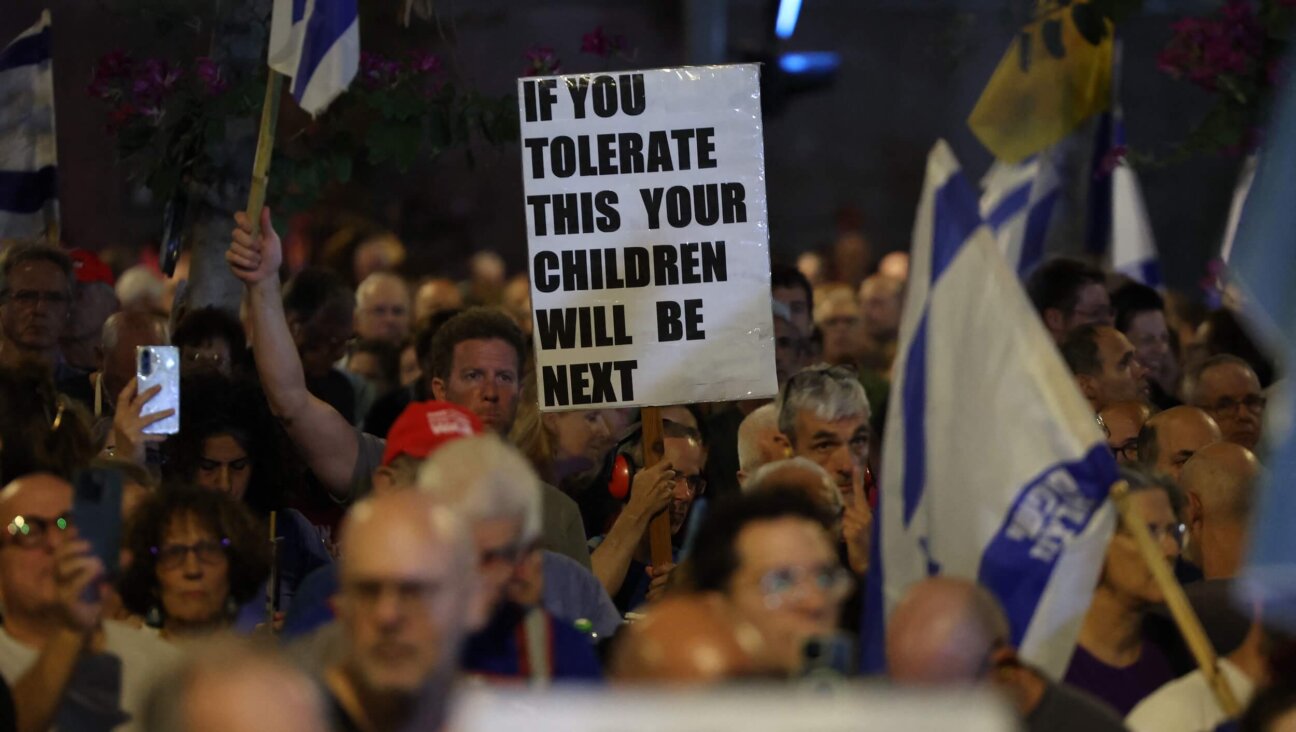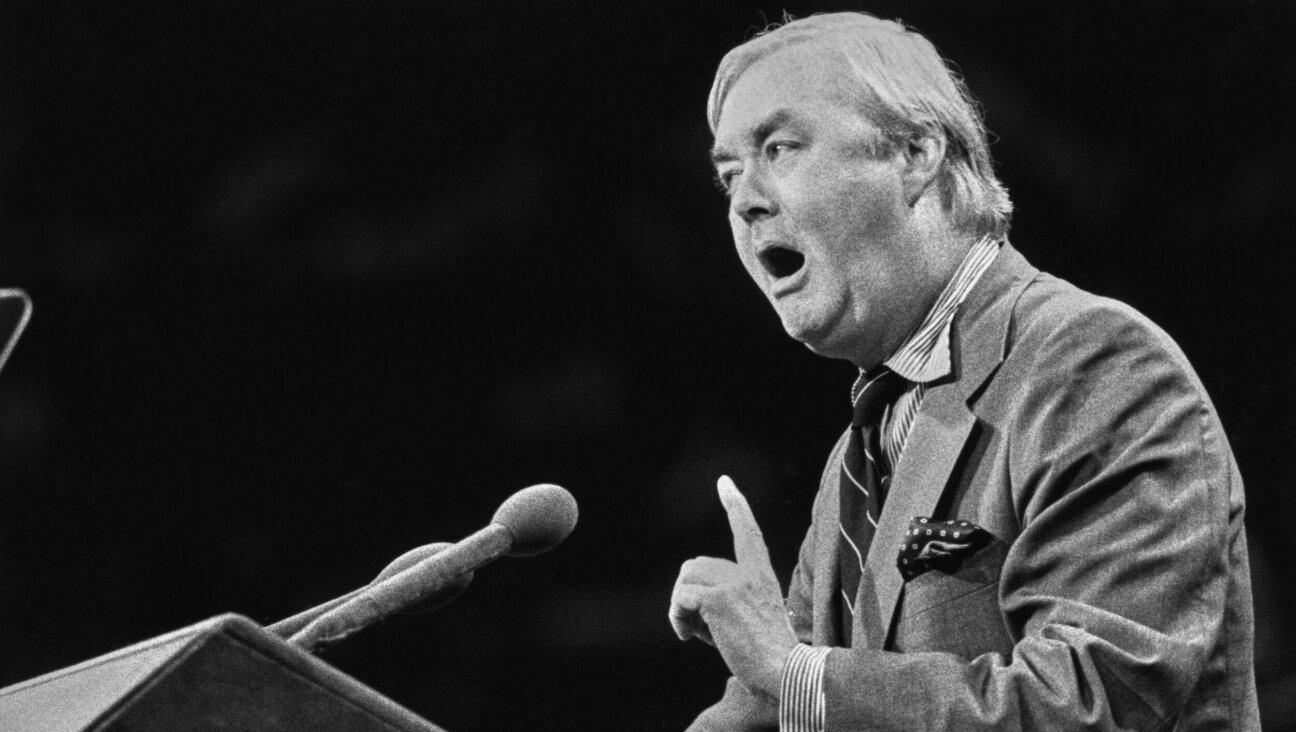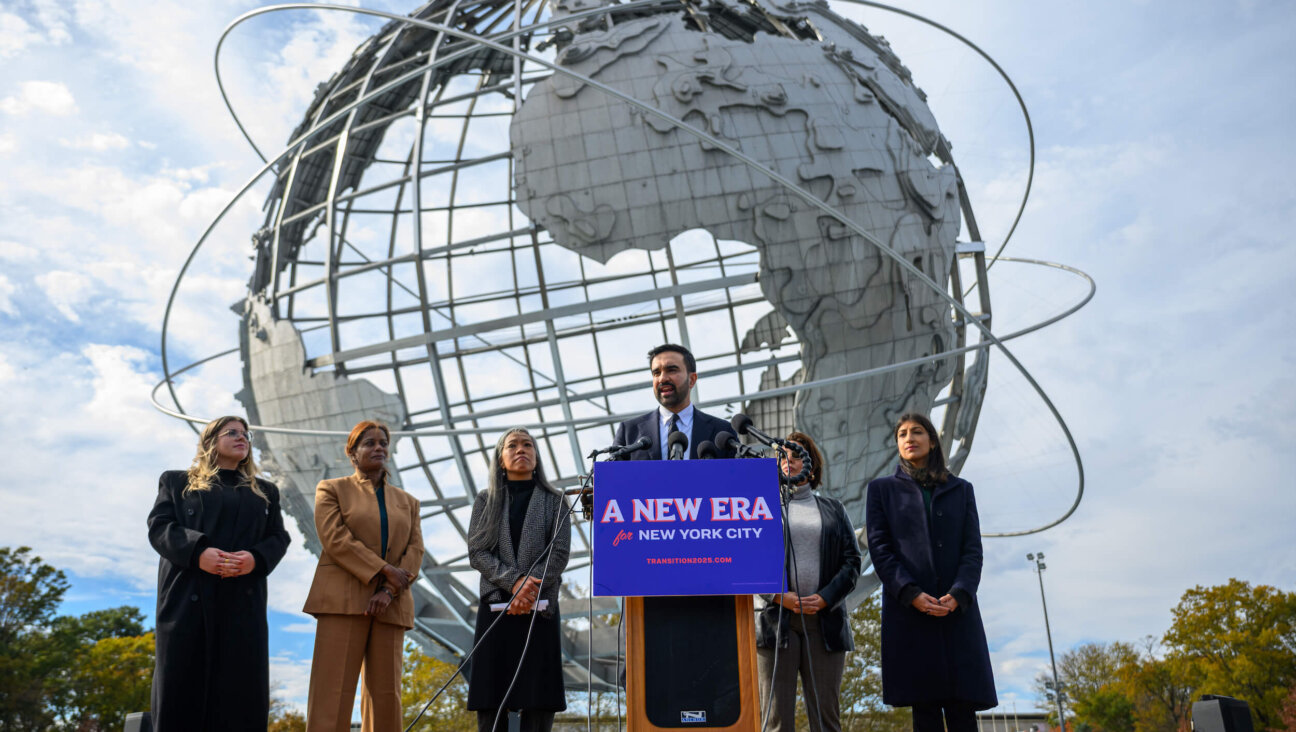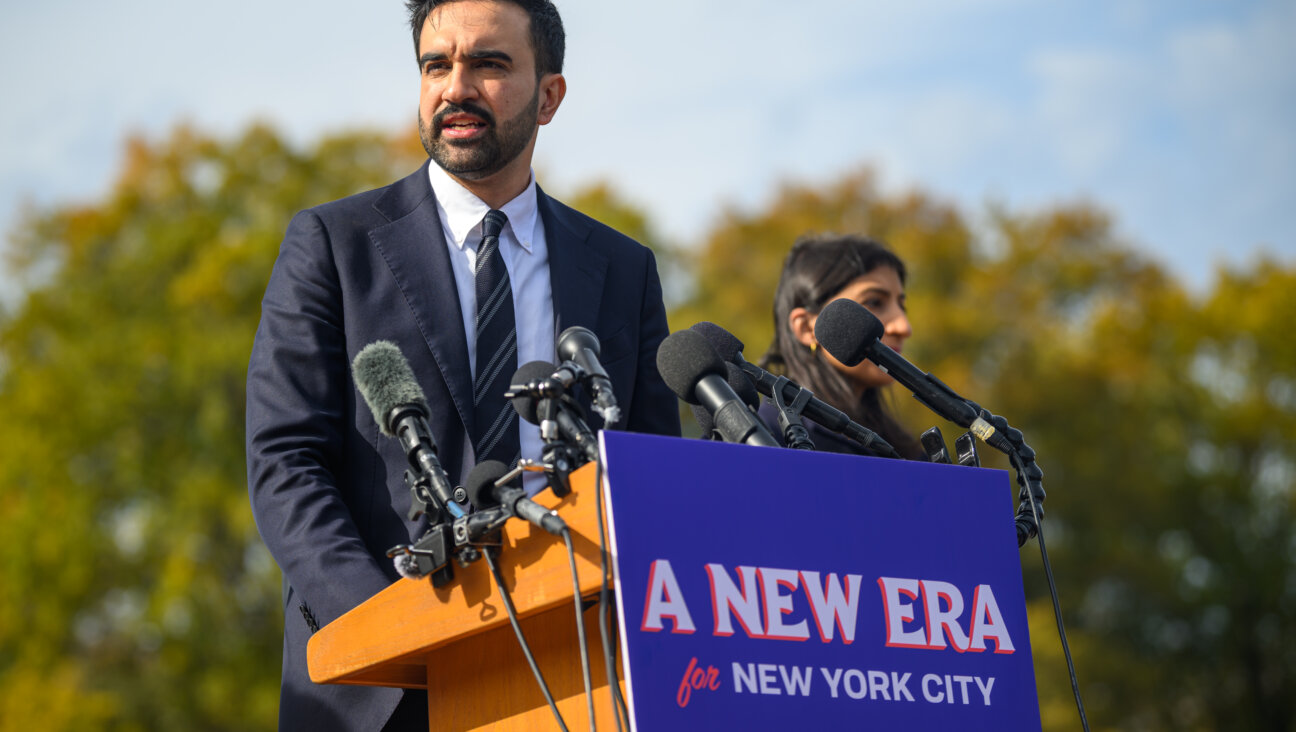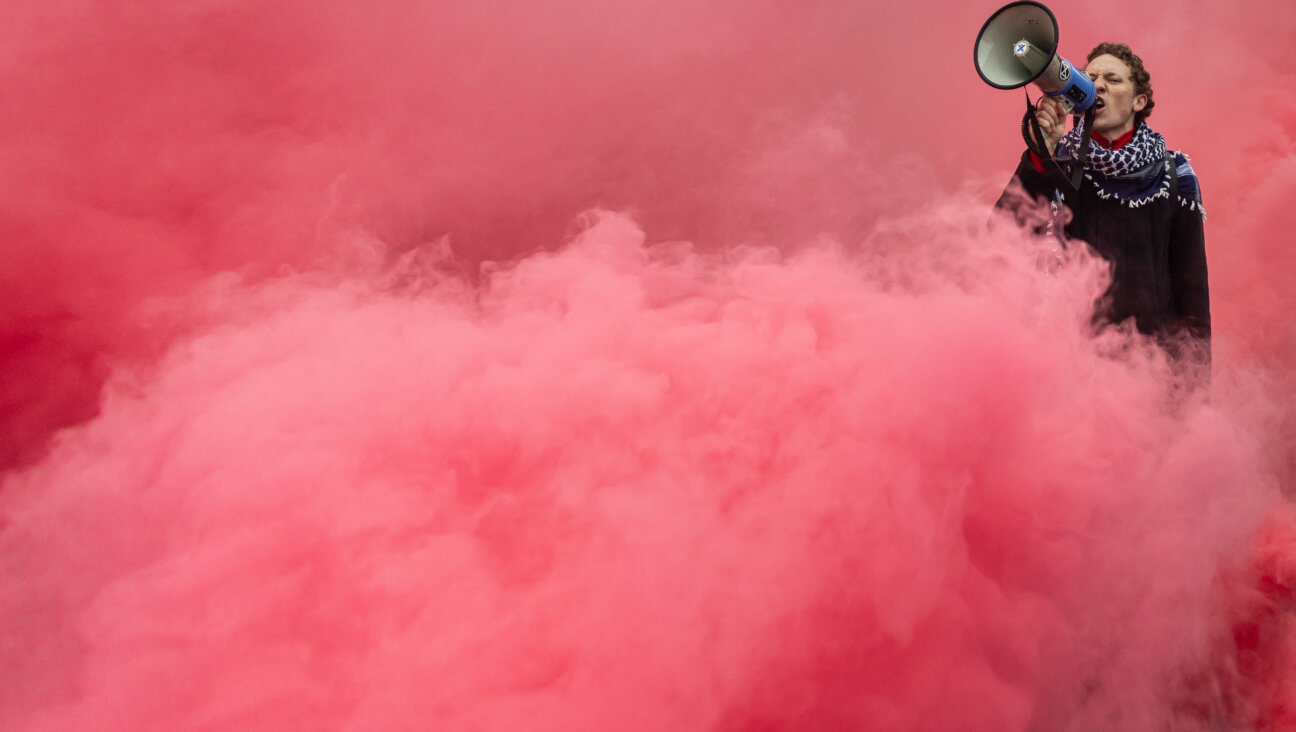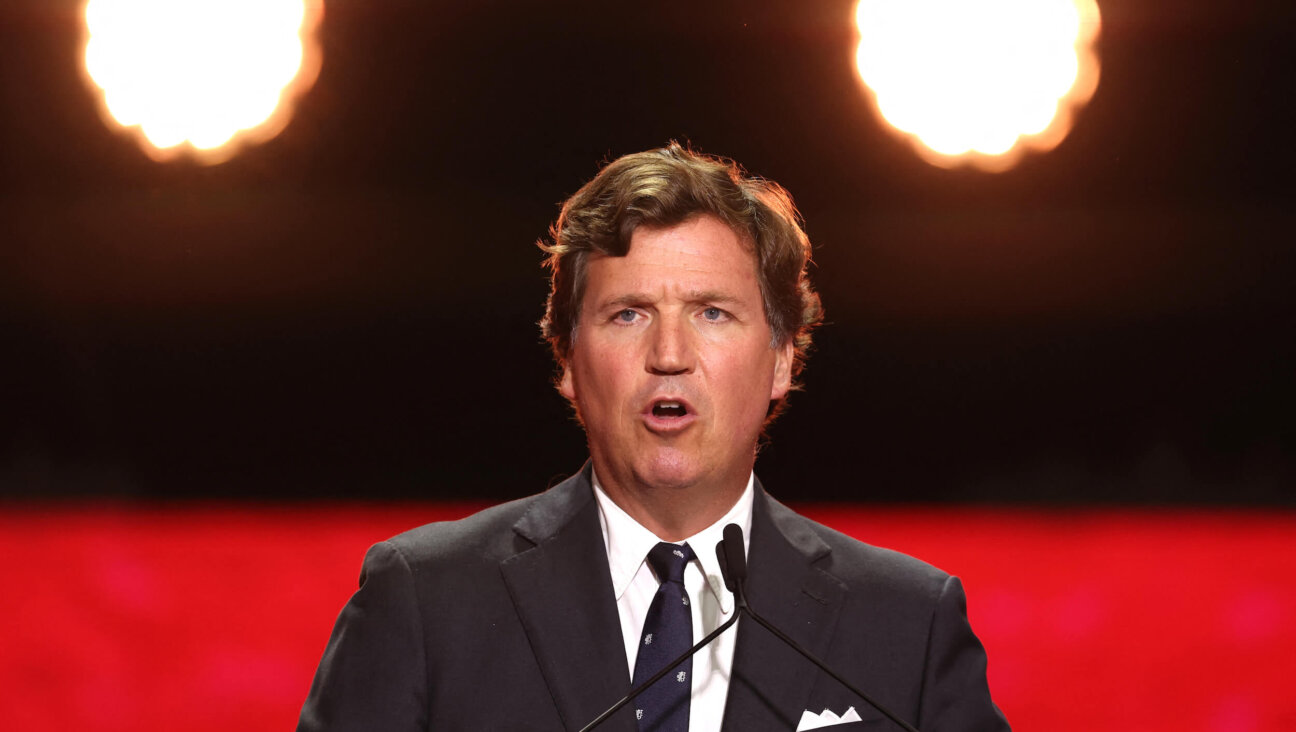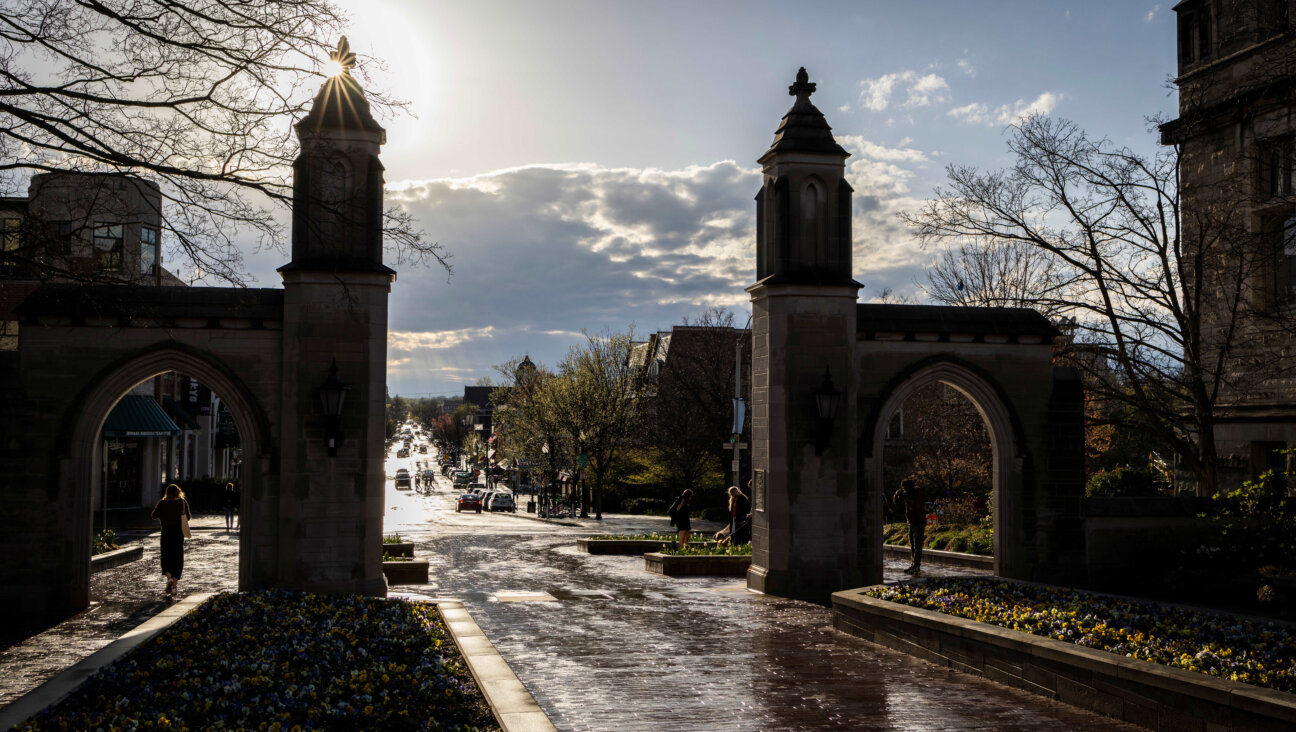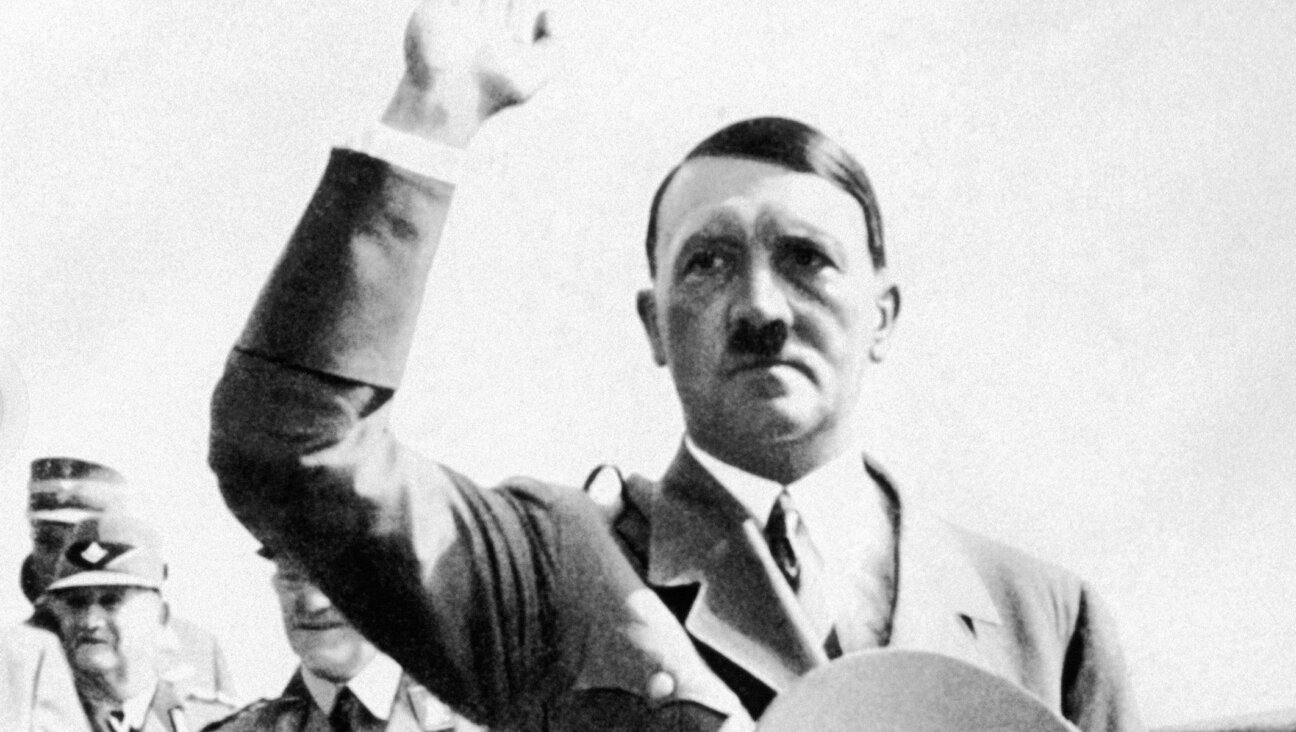How Donald Trump Scared the Jews, Won the Election — and Saved Israel (This Is No Purim Spiel!)

Image by Getty Images
The campaign was even harsher than anyone had predicted. After being told by his advisers that there simply wasn’t enough time to win over enough African, Hispanic or Asian Americans, Donald Trump went for broke, in an effort to secure the 72% of the white vote that he would need in order to stand a chance of winning the ballot in November. “The War of the Races,” was how some pundits described it.
Trump did not play his race cards openly, though some viewed his ambiguous statements as stoking the flames. When he changed his famous slogan to “Making the Real America Really Great Again,” minority leaders said they sensed a threat. When he dismissed the sporadic violence that broke out in Alabama between white supremacists and African Americans as “a legit argument,” liberal newspapers were nothing less than outraged. When a New Mexico mob attacked a family of illegal immigrants, Trump said that would no longer happen once the wall went up and “Mexico paid for it.” He used the same tactic when a series of mosques were burned in cities across America, saying that tempers would cool off once the temporary freeze on allowing Muslims to enter the United States as well as the partial ban on Muslim travel between states without a special permit would go into effect.
Most American Jews tried to steer clear of the whole meshugas. They gravitated almost by default towards the Democrats, but didn’t feel the urge to stand out among the many liberal leaders as well as prominent Christian clergymen protesting the increasingly ugly atmosphere of the campaign. Some of the rhetoric on the radical left, which often included incitement against whites as well as anti-Israel propaganda, made them feel no less uncomfortable than the vitriol emanating from the right.
But then reports started to appear of Trump rallies in which Stars of David were painted alongside the Muslim crescent on placards, with big exes on both.
“I didn’t see anything of the sort, you reporters are such liars,” Trump said, even when shown several anti-Jewish signs being waved right under his eyes in a mass meeting in Cincinnati. Confronted at a press conference in late September with several flyers containing caricatures of George Soros, Haim Saban and Sheldon Adelson as the three wise monkeys, which had been handed out at the entrance to his Chicago event, Trump blew his top. “And how many of you are Jews anyway?” he asked the shocked reporters. “Let’s see a show of hands here, c’mon folks,” he said, adding his punch line after a short pause, “because if you don’t we can always pull down your pants and find out.” The crowd that had been invited to serve as Trump’s audience burst out in appreciative laughter.
Things then went from bad to worse. Ultra-Orthodox supporters of Trump, who were persuaded by Rick Perry that Trump meant well for religious people everywhere, were driven out of a GOP meeting near Albany, accompanied by curses, shoves and several people waving their right hands in what seemed like Nazi salutes. Then Trump’s running mate told a frenzied crowd in El Paso that “Bloooomental and Schoooooomer” were ganging up on Trump to prevent America being great again “because the New York establishment wants to suck us dry.” Finally, asked to respond to a New York Times report about the hundred of millions of dollars that had been reportedly pouring in to Democratic coffers from distressed Jewish donors, Trump said: “The Jews don’t give me money because they know I can’t be bought. So they’re doing everything they can to destroy me. We’ll see how to deal with this thing once I’m in office, but I promise you, it won’t be pleasant.”
Trump was lambasted by all the major news outlets, and even Fox News said his statement was “superfluous and inflammatory.” The Republican candidate’s campaign advisers were close to hysteria, convinced that such an incendiary statement, coming less than 72 hours before the polls opened, could doom the New York billionaire’s bid for the White House. On Election Day, Jews indeed joined Hispanics and African Americans in breaking all known records for voter participation, but so did white Americans all across the country. Trump was trounced in major blue states such as California, New York and New Jersey, but he received over 80% of the white vote in Ohio, Florida and Pennsylvania, and won the elections with a handy majority in both popular and electoral votes.
He asked Arizona sheriff Joe Arpaio to accompany him to his inauguration and refused to rescind the invitations to the inaugural ball that his advisers claimed had been sent “by mistake” to David Duke and several other white supremacists. Pat Buchanan, Trump’s transition team announced, would serve as “special White House adviser.”
This is when Jewish panic went into overdrive. Though the overwhelming majority said that Trump would probably moderate himself and “where would we go anyway,” others, especially on the liberal left, were swept away in the general hysteria that gripped most Democrats. “Our complacency is like that of Jews in Germany in the 1930s” one distressed Jewish leader told a dumbfounded Chuck Todd on Meet the Press. “When our grandparents comforted themselves after Hitler and the Nazis came to power by asking ‘what’s the worst that could happen?’ Todd wanted to follow up, but the words seemed to stick in his throat so he frantically signaled to go to commercial break.
The evening news shows showed tremendous lines outside the Canadian Embassy in Washington and the Consulate General in New York: America’s northern neighbor was the overwhelming first choice of the minority of liberals, Jews and non-Jews alike, who decided to make made good on their hitherto frivolous threat to “move to Canada” if Trump was elected. Since the election of Justin Trudeau, Canada had been viewed as a progressive’s Shangri-La.
Trudeau gave voice to liberal fears when he congratulated Trump on his election but then added that the new U.S. president must take care “not to back America into a dark corner.”
But Canada wasn’t as eager to absorb newcomers as many Americans as previously thought. In practice, it turned out that immigration to Canada was a long and arduous process that took between two and four years, that Canada in recent years had accepted only a few thousand American permanent residents annually, that it had closed off the avenue of granting automatic citizenship based on capital investment and that very few American Jews were nurses, computer engineers, or aerospace engineers, the professions that allowed prospective immigrants to jump to the front of the fast lane.
In addition, following a strong private protest from the incoming Trump administration, the Ottawa government announced that it would be making no changes in its immigration quotas to meet the new demands “and everyone would have to wait their turn.” Nonetheless, demonstrations organized by nationalist right-wingers continued unabated in Quebec City, as well as Edmonton and Winnipeg, with protesters calling on the government to make sure that “we aren’t swamped by undesirables, no matter how many shekels they bring.”
When a Jewish family was assaulted in Atlanta and its home torched by white-sheeted members of a hitherto unknown group dubbing itself “The New Amerika,” a full fledged stampede broke out, headed to the only remaining place that offered instant refuge: Israel. Though Benjamin Netanyahu had refrained from openly calling on American Jews to emigrate – both because he had been warned not to do so by the U.S. ambassador and because he was well aware what kind of Jews were most likely to take him up on his offer – within the first month no less than 8,000 Jews came to Israel, many of them settling in Tel Aviv in apartments they had bought years before. In late January, after Trump said in his State of the Union Address that “America will be free of foreign influences, whether they are internal or external,” another 10,000 decided to make the move. Though the overwhelming majority of American Jews stayed right where they were, by the end of 2017, no less than 55,000 Americans had arrived, settling in the center of the country, from Ashdod in the south to Haifa in the north. Almost a thousand, however, decided to take up residence in Jerusalem “to make it a truly open city with a truly open heart.”
The newcomers were mostly J-Street types and other politically active leftists who had considered themselves “liberal Zionists” when Obama was in power, as well as doctors, lawyers, academics and several well-known journalists. Their initial absorption was harder than anyone imagined, made all the more difficult by ultra-Orthodox rioters who called on the government to “send the Jewish goyim back to where they came from.“ Ministry of Interior bureaucrats also tried to make the lives of the new olim miserable, convinced as they were that the Likud minister who had warned against the pro-Palestinian “Jewish fifth column” infiltrating the country was actually basing herself on facts rather than feverish fantasy. Several thousand newcomers gave up and went back, and many more would have followed, had it not been for the continued violent and sometimes fatal attacks on Jews in Brooklyn and other Jewish centers as well as the virulent campaign against liberal Jewish Members of Congress who were now being described by conservative radio hosts as “the Elders,” as in The Protocols of the Elders of Zion.
Thus, many of the newcomers soon settled in, resuming the kind of political activism they had engaged in before. They breathed new life into Israel’s moribund left, went about rebuilding liberal NGOs and government watchdogs, set up teams of retrained constitutional lawyers to challenge government restrictions at every turn, and even made up for the millions of dollars that had been lost when Europe decided that funding Israeli civil society was no longer cost-effective.
Slowly but surely they changed the general mood of the secular majority of the country and enlisted many traditional Israelis as well. They adopted Obama’s old slogan “Yes We Can” despite being mocked by Likudniks as “the same old kind of dangerously naive leftists that we already have enough of.” Former community organizers from the Boston area overcame walls of sabra cynicism and persuaded at least 2,000 native Israelis to volunteer for the first time in their lives. Unencumbered by Israeli resentment and anxieties, the newcomers also found it easier to set up new channels of communications and collaboration with Israel’s increasingly alienated Arab minority.
50,000 new American citizens voted in the elections held at the end of 2018. All of them supported leftist and centrist parties, and while numerically they made up slightly less than two Knesset seats, their impact was felt all across the board. Their “get out the vote” apparatus and can-do attitude succeeded in bringing out thousands of left leaning millennial first time voters who had previously preferred to get high on the beach. Other liberal and leftist Israelis came to the polls in droves, along with Arabs for whom the Americans had provided buses, finally fulfilling Netanyahu’s infamous Election Day warning of March 2015. He tried it again, but this time Likudniks decided that they weren’t suckers (“frayerim”) and weren’t going to fall for that stale old trick yet again.
In April 2019, the new government was installed. “It’s the dawn of many new days,” the newly-elected prime minister told an ecstatic crowd of hundreds of thousands at Tel Aviv’s Rabin Square, echoing Ehud Barak’s famous 1999 exhortation. The newspapers reported that President Trump had invited the new prime minister to the White House to discuss the situation in the Middle East, which, a Trump spokesman noted, “only Trump can resolve.”
Accepting the invitation, Haaretz reported, the prime minister intended to inform Trump of his government’s plan to open 10 new emigration centers for Jews in distress in major metropolitan centers across America. White House sources said the president believed American Jews are Americans “just like everybody else,” but he would nonetheless consider the plan “because Israel is their home too.” Trump’s Evangelical vice president was even more enraptured: asked about the Israeli plan to take back hundreds of thousands of Jews to their biblical homeland, his one word reply was “Hallelujah.”

